If you have been an audiophile, even for a short time, you have come to understand that different regions of the globe have a certain geographically specific sound to their loudspeakers that is hard to miss. One of the more sought-after sonic signatures is that of small British loudspeakers. British loudspeakers tend to be an audiophile favorite when nicely executed, because they combine a touch of euphonic warmth with a full-bodied midrange that is easy to listen to. Modern British loudspeakers are uber-refining these qualities with advanced technologies, be they in the crossovers, in the speaker cabinet or with the choice of drivers.
Enter Wharfedale and their 92 years of British loudspeaker manufacturing experience. By the way, 92 years is not a typo. Since 1932, Wharfedale has been refining British loudspeaker excellence, while also packing serious value into their loudspeakers. Recently they have gifted the audiophile community with the stand-mounted AURA 1 loudspeaker that has received much of its technology from their flagship ELYSIAN line of loudspeakers. The Wharfedale AURA 1 sits in an audiophile sweet spot for loudspeakers at $1,999 per pair, with matching stands for $1,000 more. The Wharfedale AURA 1 is, however, a small loudspeaker with a five-inch woofer. We live in a world where $3,000 can buy a whole lot of high-quality loudspeakers, so can the AURA 1 really make its mark? I could not wait to get the box open and find out.
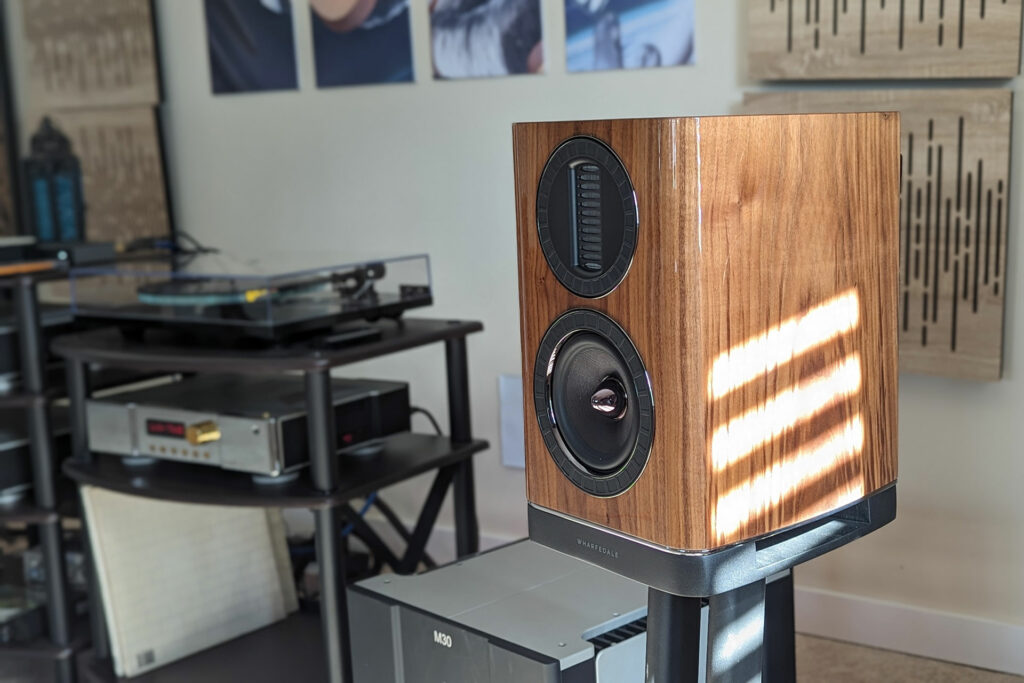
What Makes the Wharfedale AURA 1 Loudspeakers So Special?
- The AURA 1’s AMT tweeter is the first I have heard in a small loudspeaker that seamlessly integrates with the woofer. Not all AMT (Air Motion Tweeters) transducers are high-quality, but they are almost always associated with audiophile quality. Suggesting that all AMT tweeters are the same is like saying all dome tweeters are the same, when they aren’t even close. Wharfedale has developed an amazing AMT that is used in the AURA 1 that maintains the classic British smoothness in the high frequencies, paired with modern tweeter treble extension and openness that is the signature of the AMT concept. What is even more impressive is the physical integration to the small woofer in the AURA 1, which can be a problem, since large surface-area tweeters tend to overpower small woofers in the midrange frequencies around the crossover. This overpowering is due to a similar radiating surface area in the midrange, but falling acoustic power radiation capabilities in the upper bass frequencies inherent in the physical nature of small woofers. I do not know how Wharfedale did it, but they are onto something special with the AURA 1.
- The multi-layered cabinets in the AURA 1 loudspeaker eliminate any meaningful cabinet resonances. Have you ever heard a cabinet? Let’s hope not. I would wager you have, even if you did not recognize what a resonating loudspeaker cabinet sounds like. The net-net of it is that you want to hear as little of your speaker cabinet as possible, thus the more solid or inert that the cabinet is, the better and more accurate the speaker will sound. You get that in the Wharfedale AURA 1 speakers, as you don’t get a floorstanding speaker for two grand, but you do get an amazingly well-built, smaller speaker for your money.
- The unique, Slot Loaded Profiled Port (SLPP) delivers very high-quality bass from a small cabinet. Mature loudspeaker companies have some pretty amazing, state-of-the-art design tools at their fingertips. More importantly, they know how to use them. Like the elimination of cabinet resonances, port noise and resonances in vented loudspeaker cabinets can be a huge problem. Wharfedale has overcome this issue in their Elysian series with the development of the SLPP system, and they share it with the AURA 1. The result is very high-quality low bass that seamlessly integrates into the midbass thus harmonizing the sonic picture of low frequency instruments within the soundstage.
- The Wharfedale AURA 1 loudspeakers are gorgeous to the eye. I received the Walnut veneer, and the quality of the finish is as good as any top-tier loudspeaker out there. All the seams between the elements (drivers, etc.) that go into the cabinet, as well as the cabinet finish itself, are perfect. Your two grand gets you a small bit of audio jewelry, and that is pretty rare in this hobby these days, as you normally need to spend much more to get this level of design excellence implemented.
- The woofer in the Wharfedale AURA 1 is no slouch, either. The glass fiber woofers are state of the art, thus employing techniques to lower distortion and extend bass, despite these relatively small drivers. I can tell you that these drivers are some high-end, expensive parts.
- In the Wharfedale AURA 1, there are separate crossover boards for the filter electronics of each driver to lower noise. Noise is bad in nearly any-and-all audiophile applications, with speakers being no exception.
- Big props go to Wharfedale for using high-quality binding posts. These might be small speakers, but you get all of the goodies that you would expect from far, far more expensive audiophile speakers here at $2,000 per pair. That never gets old.
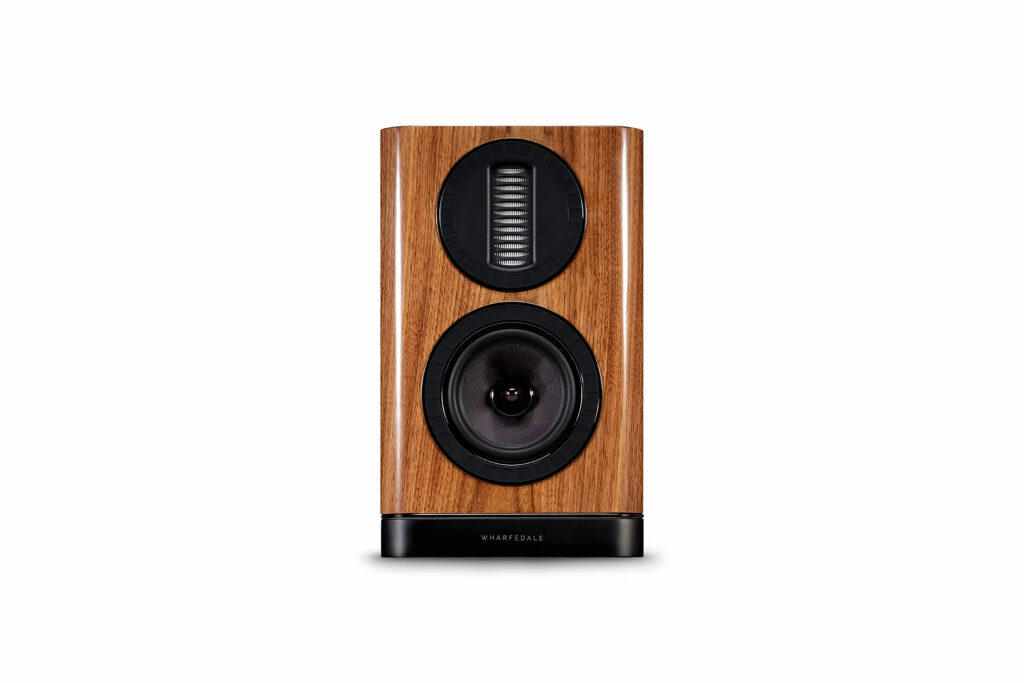
Why Should You Care About the Wharfedale AURA 1 loudspeaker?
For the audiophile who wants that iconic British sound, paired with stellar imaging and all of the goodies that come with $2,000 per pair bookshelf speakers (plus stands), the Wharfedale AURA 1 is for you. Yes, you can get more output. Yes, you can get more bass. You can’t get better highs and mids from a floorstanding speaker at this price and, with all due respect, subwoofers just aren’t that expensive if you want lower bass. They just aren’t.
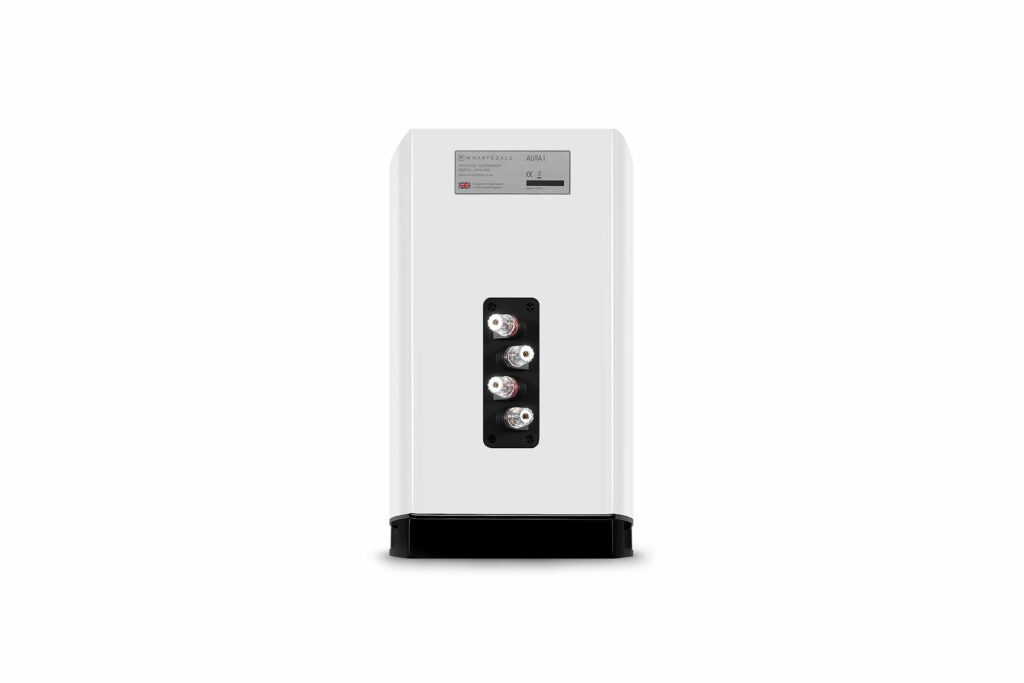
Some Things You Might Not Like About the Wharfedale AURA 1 Loudspeaker
- The Wharfedale AURA 1 loudspeakers are a little power-hungry, which might be a bit unexpected from such a small physical speaker, but believe it. I would recommend that the AURA 1s be paired with something like the Adcom GFA-555ms (Read the Eric Forst review here), while avoiding lower-powered (especially) tube amplifiers. While the AURA 1s are a power-hungry load, they are not a difficult load (there is a difference), so a full-bandwidth 30 watts or more should easily put lead in your pencil with the AURA 1.
- They are a small loudspeaker, thus have understandable physical limitations on total output of sound because of size. It is possible to put the AURA 1s in a room that’s too large. Anything over a medium-sized listening space, and you may want to consider an upgrade to, say, the Wharfedale AURA 2 speakers. I have a large room, and I was able to power them with tons of current. They could do a really solid job of energizing my space, but bigger speakers do it even better, thus my earlier subwoofer comment.
- Bass extension is limited, as you might expect with a mere five-inch bass driver. The Wharfedale AURA 1 speakers develop very high-quality bass that adequately reproduces most acoustical instruments, such as upright acoustic bass, cello, drums and bass guitar. Like all smaller speakers, the Wharfedale AURA 1s fall a little short with large concert bass drums or synthesized bass lines. To be clear, I am not a bass head by any means. I prefer high-quality, seamlessly integrated bass, so the AURA 1 has plenty for me that is always within the scope of the music. In the spirit of different strokes, if you happen to be a bass head, or want to use the AURA 1s for their seamless sound in a large room, consider pairing them with a high-quality subwoofer like the REL Acoustics T/7x my colleague Greg Handy recently reviewed here.

Listening to the Wharfedale AURA 1 Loudspeakers…
I was immediately charmed by the Wharfedale AURA 1 bookshelf speakers when I put them in my main listening system straight from the box, cold and not broken in (if you believe in speaker break-in, as there are serious studies that suggest that it is not “a thing”). The AURA 1s’ charming nature only grew inro a siren’s song as they came into their own over time. I never felt the need to try the AURA 1s on lesser equipment than my reference system, because they were able to present the music in a manner that never made me feel they were being outclassed by top-tier electronics. The Wharfedale AURA 1 speakers were not perfect in this sense, but they were far superior to another $3,000-plus bookshelf loudspeaker I currently have in my possession. I am a big fan of exceptional value and, when listening, the Wharfedale AURA 1s provide visual and aural beauty that belie their $2,000 price tag.
It is a safe assumption that audiophiles of all ages know the MTV Unplugged series of albums, which were birthed in the early 1990s. If you do not, MTV took some of the greatest artists and bands of that era, and had them play live, acoustic shows in smaller venues, starting with Eric Clapton, which was an audiophile instant classic, to use an ESPN term. Alice In Chains – Unplugged is my favorite of these albums, and one of the few albums in my collection where I can fairly say that I love every track. The track “Over Now” saw some radio airtime, and is a surprisingly complex piece of music. The Wharfedale AURA 1 speakers capture the complexity and the small theater acoustic right in my listening room, putting me about 15 rows back, dead center in the performance. Those would be good seats by my standards. The wide soundstage of the Aura 1 has a sense of air and ease that placed the instruments where I have heard them on much more expensive loudspeakers, like my reference PSB Synchrony T-800. While the Wharfedale AURA 1 speakers were able to pull off such an amazing, scaled and accurate soundstage, the similarities between the AURA 1s and the PSBs ended there – mainly because they are small bookshelf loudspeakers competing against larger form factor floorstanding speakers. Yet I still found the AURA 1s to possess a heathy amount of kick in the drums, body to the low-E string of the bass guitar, and even upper-bass snap to the snare drum and acoustic guitar plucks. The cymbals from the AMT tweeter sounded beautiful, and I could easily tell the difference between them as the drummer moved his way around the kit. For this track, the AURA 1s were certainly an enjoyable, sophisticated listen.
In 2019, the 1980s hair band Tesla hopped into Abbey Road studios and ripped out the live album Five Man London Jam. It is absolute hoot to listen to this album. Tesla still can perform today like they have not missed a step, which is no small feat this many years into their rock ‘n’ roll career. Power ballads were prevalent in the 1980s, and one of my favorites is “What You Give.” Five Man London Jam is more aggressive than Alice in Chains – Unplugged, and the AURA 1s struggled to keep up with the size of the music. The Wharfedale AURA 1s did, however, maintain their cheerful stiff upper lip and with a touch of warmth to the sound, and were still able to make this challenging track an enjoyable one. The AURA 1s really could benefit from a subwoofer with big, aggressive music, but can’t most small bookshelf loudspeakers? Otherwise, the AURA 1s impressed with their soundstage, resolving power, and flawless integration between the large AMT tweeter and five-inch woofer.
Hopping out of the rock arena, while scrolling through my Qobuz favorites, I accidentally clicked on the track “Over The Rainbow” performed by Jane Monheit off her album Taking A Chance On Love. The AURA 1s leave little be desired from $2,000 per pair bookshelf loudspeakers with dynamic female vocals. Monheit’s voice was smooth as silk, without feeling like it lacked resolution, and the strings had full body with lots of air around them. It is impressive how the AURA 1s tick these sonic checkboxes at both their size and price. Again, the soundstage of the AURA 1s captured the hall of the small orchestra, as demonstrated by the French horn that accompanies the strings. The French horn’s reflected signature washed from wall to wall, and flooded the soundstage from floor to ceiling. Wharfedale certainly has a very impressive little loudspeaker in the AURA 1.
Does the Wharfedale Aura 1 Loudspeaker Have Any Resale Value?
Wharfedale’s long track record as a speaker brand helps long-term value of the AURA 1 speakers. So does the brand’s distribution via MoFi Electronics, which is doing a good job promoting the brand among a number that they also import. The Wharfedale AURA speakers are beautiful, sound excellent, and are easy to pack up and ship. Just make sure you keep the original box and materials to protect the gorgeous finish, and you should be on solid ground with retaining value with the Wharfedale AURA 1 speakers.
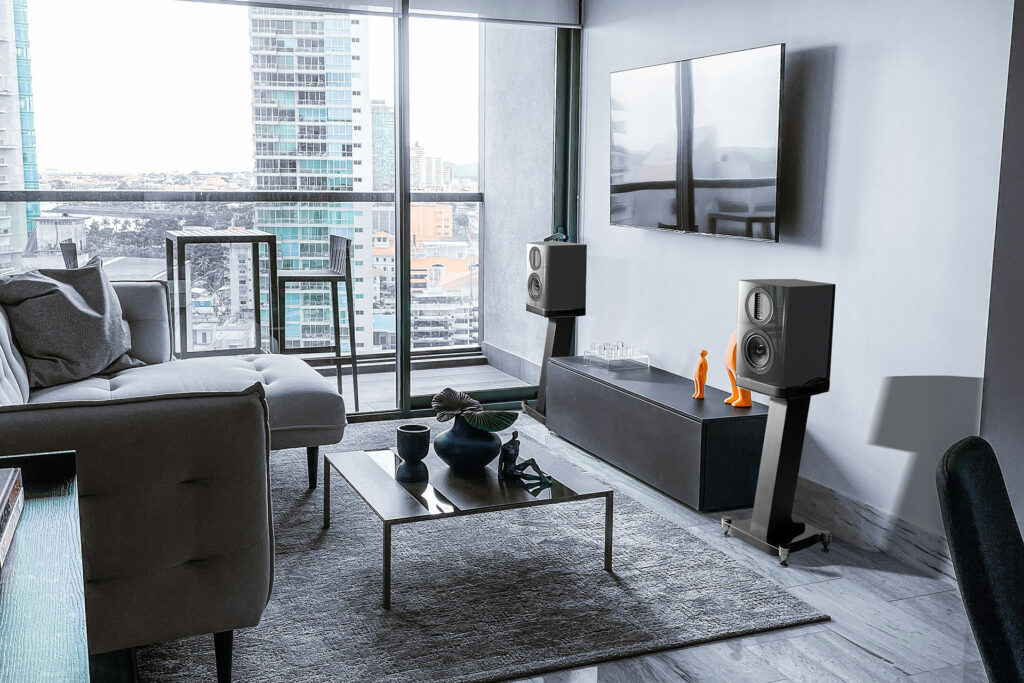
What is the Competition for the Wharfedale AURA 1 Loudspeaker?
Andrew Dewhirst recently reviewed the $3,000 per pair Totem Bison (read the review here) floorstanding loudspeakers. The Bison is about the same size as the AURA 1 on a stand. As with many floorstanding loudspeakers in this price point, the larger cabinet of the Bison provides deeper bass, but it seems to come with placement sensitivities that the AURA 1 does not have.
Going back to one of my first reviews for Future Audiophile, the $1,299 per pair Polk Audio R200AE (read the review) represents the same kind of value that the AURA 1 does, just at the next tier down. Their stronger bass but surprising resolution makes them a competitor for the AURA 1 if you are an audiophile who just cannot part with the $2,000, but love the sound of a quality bookshelf loudspeaker. Having them side by side in my listening space was extremely educational.
Another recent rave review from our fearless leader Jerry Del Colliano was of the $1,999 floorstanding MartinLogan Foundation F2 (read the review). The MartinLogan Foundation F2 has an AMT tweeter like the AURA 1, lacks the fit and finish of the AURA 1, but packs a lot of loudspeaker into a thin tower cabinet. It seems the Foundation F2 may be the loudspeaker to beat at this competitive price point.
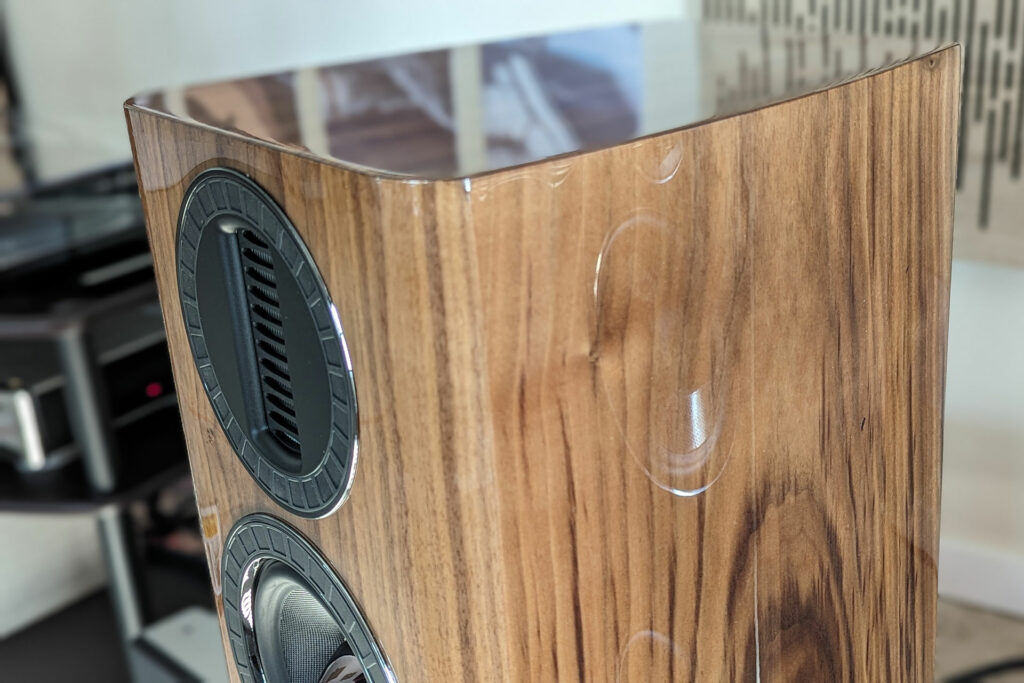
Final Thoughts on the Wharfedale AURA 1 Loudspeakers…
There are so many loudspeakers in the audiophile market of various shapes and sizes today that the consumer is truly the king. It can be daunting to find the needles in this haystack that truly represent stellar value, which is likely why you read reviews from experienced audiophile writers. I define loudspeaker value as sonic performance that represents modern best engineering practices and a refined fit and finish that look like they belong in a sophisticated listening space – all for surprisingly little money.
The Wharfedale AURA 1s truly define value at the $2,000 price point, packing everything one could ask for into bookshelf loudspeakers used for serious, deep musical listening. Yes, they are constrained by the normal physical shortcomings of small bookshelf loudspeakers, and no, they will not hang with the likes of the $8,500 per pair Bowers & Wilkins 805 D4 (read the review). If someone can show me a $2,000 per pair loudspeaker than can hang with a $8,500 per pair loudspeaker, I will eat my hat.
The key takeaway here is… Wharfedale truly has flexed their 92 years of speaker design excellence in the AURA 1. This should have all loudspeaker companies paying attention, because if the AURA 1 is a sign of what is to come from Wharfedale, they will only widen the gap further of what is possible in value-oriented audiophile loudspeakers.




Has anyone noticed how the price of western designed, Chinese manufactured speakers has escalated recently? The Aura 1 improves on the similar Evo 4.1, that had some easily fixable performance issues, however the price went from $800/pair to $2000/pair in the process. Another example are the MoFi SourcePoints in comparison with Elacs. Also, my Q-Acoustics 3050 ($400/pair) compared with the new 3050c ($2000/pair). There are other examples most of which are UK designs, I wonder if Brexit & striving for market share has something to do with this?
hi Trevor, what are the easily fixable performance issues of the evo 4.1 ?
The quality of products manufactured in China have come a long way, in spite of the fact that their labor and cost of living continue to be less than in other countries with comparable production facilities.
Not to say there are not companies that pay livable wages in China, but unlike the wages paid, e.g., in Europe or the US to produce a similar product–where employees can afford to travel to other countries on vacation–such travel/vacation opportunities are less likely for those doing the same work in China.
In short, the field of play, still, remains uneven–albeit how many of us who reap the benefits of lower prices will contextualize this reality and change their buying habits?
I don’t believe the profits from inflated prices are going to Chinese workers, the’re going to western companies competing in an increasingly crowded market (too much stuff?), companies trying to retain market share. The reason they can do it is, the perceived quality of Chinese manufactured goods has increased greatly over the last twenty years.
That same increase in quality has occurred in kitchen appliances. Twenty years ago a Chinese manufactured toaster or coffee maker was lucky to last a year. Today they last as well as American manufactured designs of the past.